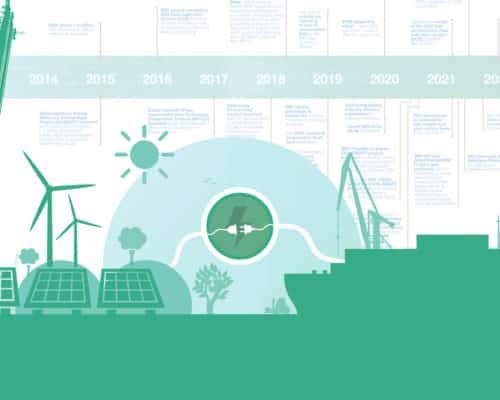Renewable Energy
MHI First Transition Bond Program – All You Need to Know
Instead of the innovative green financing mechanism they were supposed to be, transition bonds have become the perfect tool for greenwashing. MHI's first transition bonds program can either accelerate the company's net-zero efforts or further distance it from carbon neutrality. The key is in MHI's hands.
The Outlook for Electric Cooking in Asia
Many low-income households in developing Asia continue to use wood as the primary fuel for cooking. Despite the sufficient amount of electricity access, for most middle and high-income households across developed and developing Asian countries, gas and LPG remain the preferred choice. Governments have to stimulate the transition to electric cooking to help households ensure more affordable and cleaner cooking.
The Transition to Clean Cooking: How to Replace Gas?
While gas has long been considered a clean cooking fuel, research shows that it can impact health. This, paired with the high gas prices, the global net-zero journey is making countries around the world look for alternatives. Induction and electric stoves can be the solution. And the renewable energy transition is starting to prove it.

Is There a Future For Wind Turbines in Singapore?
Singapore has many road blocks in adopting low carbon energy, one of which is the lack of viability for wind turbines. The country's most efficient renewable energy option is solar energy. However, even solar faces its own challenges – mainly limited land. As an alternative, Singapore is looking toward its neighbouring nations to import low-carbon energy in pursuit of its net-zero goals.
Vietnam’s National Climate Change Strategy to 2050 and the Plan for Meeting Its COP26 Commitments
Vietnam's latest move is proving that despite the growing needs of its energy-hungry economy, it will actively pursue its net-zero commitment and prioritise climate change mitigation and adaptation efforts – a move that other Asian countries should take note of.
Home Wind Turbines – All You Need To Know
Home wind turbines have historically seen low adoption rates, but this is changing. They are finding a place as part of local microgrids and larger energy systems. Combined with other energy sources and battery storage systems, they are an essential piece of renewable energy technology.
Climate Change in Singapore: Impact, Response and Goals
Singapore's location and geography make it highly susceptible to the impacts of climate change. As a result, the country is implementing a wide array of policies to reduce its greenhouse gas emissions and prepare for predicted future climate impacts.
Wind Energy: Advantages and Disadvantages
Wind energy is one of the leading renewable energy technologies in the world. Not only does it have substantially lower environmental impacts than fossil fuels, but it has significant economic benefits. The disadvantages of wind energy typically relate to high up-front costs and intermittency, which are the same concerns as renewable energy in general.
A Guide To Renewable Energy Salaries [2022]
Renewable energy salaries are rising as renewable technology is adopted and countries work to decarbonise their energy systems. This trend will likely continue, with the potential for a significant labour shortage and skill gap. The upcoming decades are a make or break period for the Paris Climate Agreement. Data shows that the renewable energy industry is a growing opportunity for job seekers looking to help countries achieve their decarbonisation targets.
Labour Climate Change Policy 2022 in Australia – Ambitious, but Facing Lots of Challenges
Australia is on the receiving end of the harshest impacts of climate change. The IPCC says Australia is racing towards a future of similar or even worse disasters. Labours new climate policy offers hope.
How Do Wind Turbines Work?
Wind turbines capture the kinetic energy in the wind, transfer it into mechanical energy and finally turn the mechanical energy into electricity. This energy transfer, and wind turbines themselves, have seen a dramatic increase in efficiency over the last several decades. This is leading to increasing rates of adoption with new designs and broader applications.
The Philippines’ Climate Policies and the Priorities for the New President
The new president and his administration will have to lead the Philippines through one of the most critical moments in the battle against climate change. Considering how much is at stake for the island country, the new leadership should pursue ambitious climate policies that abandon fossil fuels and prioritise renewables.
Elections in Asia 2022 and Their Effect on the Region
The recent elections in South Korea, Australia and the Philippines have helped paint a picture of the region's net-zero journey. While the new leaders of the three countries have announced some ambitious goals, the overall sense is that more could be done, considering the vast renewable energy potential of the region.
Green Technology in 2022: Examples, Benefits, Goals and Future
Green technology will undoubtedly be the leading driver for climate mitigation and the green energy transition, but technology alone is not enough. The adoption of nature-based solutions and reducing overall energy demand should also be considered an integral part of the world's decarbonisation plans.
Most Popular
Categories
-
9
-
31
-
127
-
4
-
17
-
39
-
51
-
14
-
10
-
15
-
23
-
6
-
155
-
162
-
23
-
1
-
22
-
30
-
36
-
66
-
14
-
74
-
40
-
17
-
6
-
28
-
21
-
85
-
245
-
20
-
35
-
31
-
9
-
41
-
35

